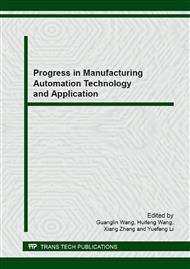p.831
p.835
p.841
p.845
p.851
p.856
p.862
p.866
p.873
Study on Exhaust Diffusion Control in Urban Trunk Intersection
Abstract:
With vehicle population increase, urban trunk traffic flows augment significantly. Traffic environmental problems are become progressively severe challenge, such as congestion, emissions, and photoacoustic pollution. In view of exhaust pollution diffusion problems in urban trunk intersection, this article took North Bayi Street - South Bayi Street in Jinhua as case, carried out traffic surveys of trunk along, tested vehicle exhaust pollutants concentration of intersections, analyzed the exhaust diffusion characteristics of trunk along during the early peak, evening peak and working hours on workday, and proposed relevant emission control measures. Traffic flow in this urban trunk was about 860-3060 pcu/h, and CO was the main pollutant in the exhaust emissions. CO and NO2 diurnal variation ranges were 3.23-14.2ppm and 0.1-0.71ppm. Intersection 4 (South Bayi Street - West Shuangxi Road) with the maximum average concentration of exhaust pollutants along trunk, diurnal variation of peak period were distributed in morning, evening and noon hours, and the evening peak was the maximum. Under the same conditions, exhaust pollutant concentration raised with the traffic increasing in a linear positive correlation. Traffic management measures could control vehicle exhaust diffusion concentration and spread range in the intersection, such as using new clean energy, improving existing fuels, bettering whole road network emissions, and increasing the green rate around intersections.
Info:
Periodical:
Pages:
851-855
Citation:
Online since:
September 2013
Authors:
Price:
Сopyright:
© 2014 Trans Tech Publications Ltd. All Rights Reserved
Share:
Citation:


